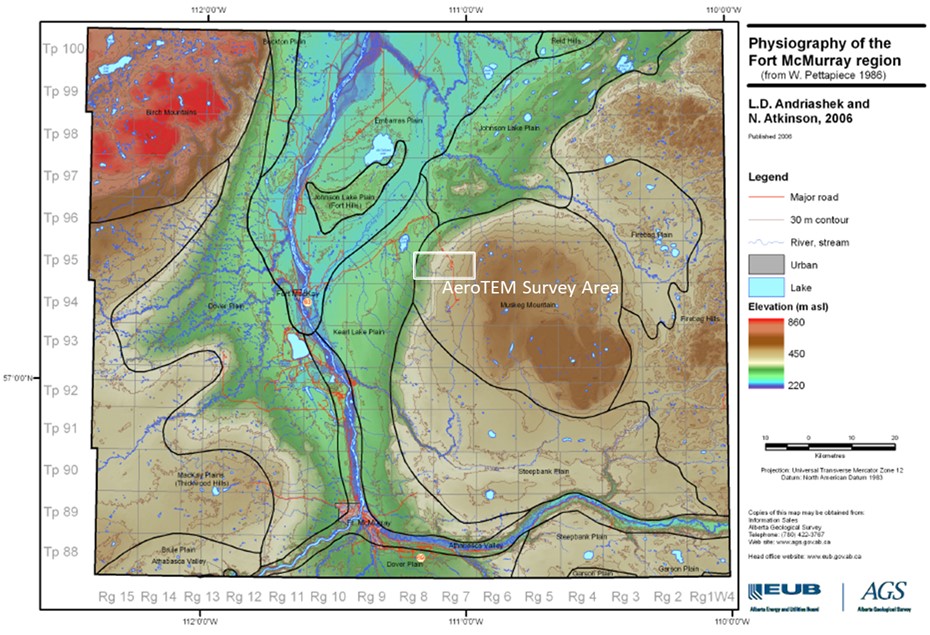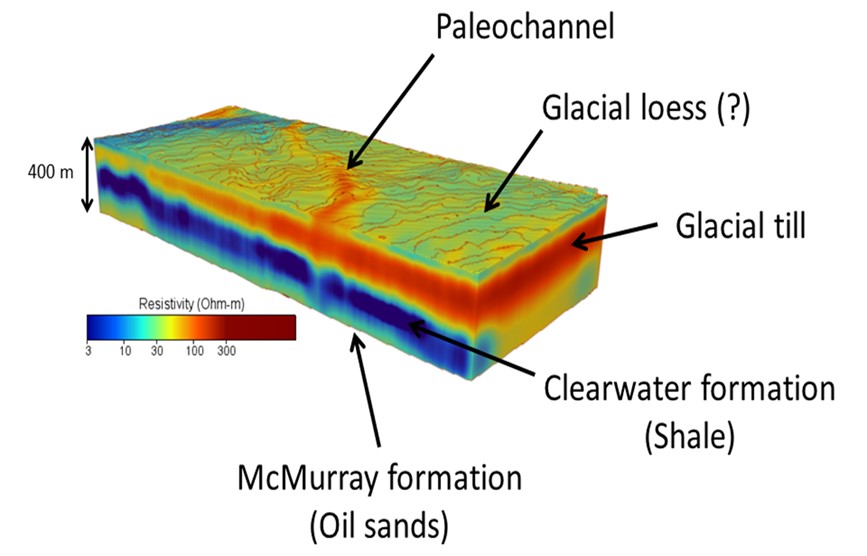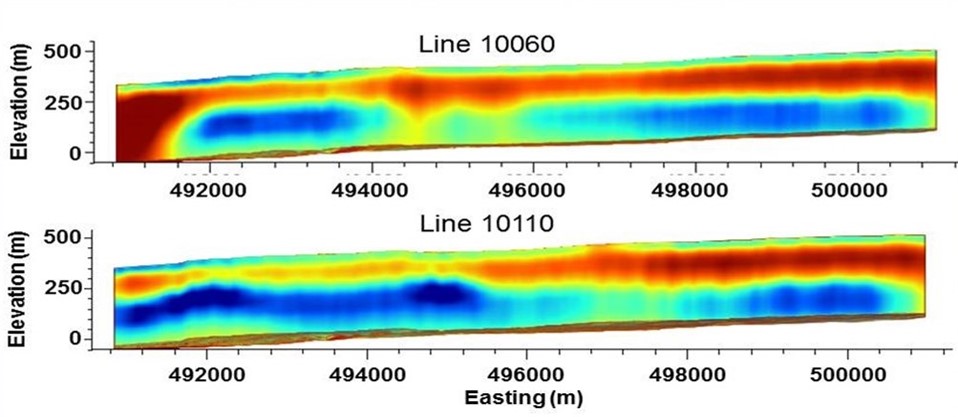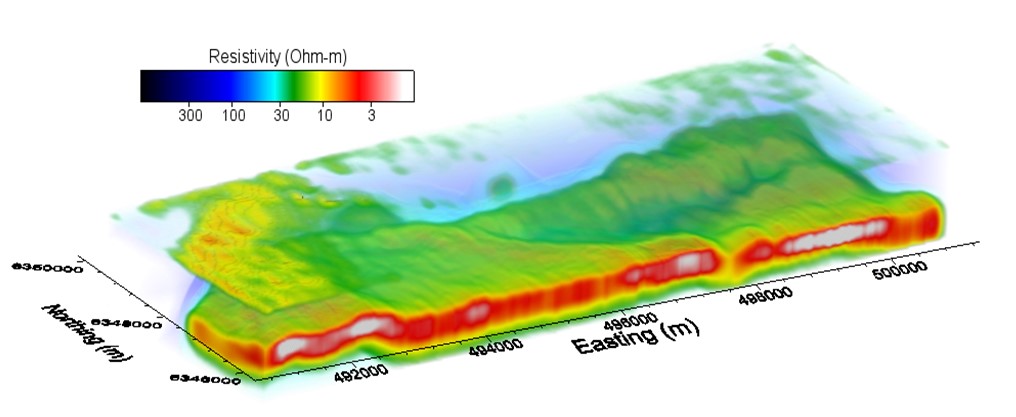Motivation for airborne oil sands exploration
- Relatively shallow geology (~500 m)
- Pattern drilling is extremely expensive
- Land seismic is also expensive
- Airborne electromagnetic (AEM) methods are ideal:
-
- Sensitive to resistivity contrasts of the main geological formations and hazards
- Minimal environmental invasion
- Large areas can be acquired rapidly for low cost (relative to seismic or drilling)
AeroTEM survey was carried out in the Fort McMurray region of Alberta, Canada

3D inversion/imaging of AEM data: Glass Earth® (resistivity) model

Vertical cross sections of Glass Earth® model

Perspective view of Glass Earth® subsurface model

